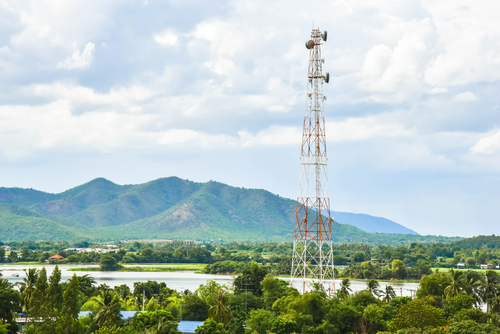In 2002, the Federal Communication Commission (FCC) assigned the 4940-4990 MHz band, commonly known as 4.9 GHz band. These higher frequency antennas are helpful to support public safety. This means that all communications that go through this band should be public safety announcements that help protect people’s health, life, and property.
The 4.9 GHz band is designated to be used for both fixed and mobile services (with the exception of aeronautical mobile service), and it supports a wide range of broadband applications. These include Wireless LANs that are used for incident scene management as well as temporary hotspots and temporary fixed communications. Other applications include mesh networks, Wi-Fi hotspots, Voice over Internet Protocol (VoIP), and permanent fixed point-to-point video surveillance and broadband service.
Higher frequency antennas are required to receive and transmit signals in the 4.9 GHz band. Since the wave length of the radio wave frequency being used influences the size of antennas, higher frequency antennas are usually shorter in length to accommodate the relatively short wavelengths found in the 4.9 GHz band. Omnidirectional antennas in this frequency range are around 2.5 cm in diameter and 25 cm in length, which is why even the most basic versions are small enough to be placed in walkie-talkies and other two-way, land-based mobile radio systems. Higher frequency antennas can also be found in cordless phones, cellular phones, and other mobile devices as well as directional antennas for television reception and point-to-point communication.
Benefits and Challenges
Wavelengths in higher frequency bands are characterized by the fact that they travel by line of sight propagation resulting in several challenges.
The biggest issue is when an obstruction(s) is present between the radio wave source and the antenna. High-frequency radio waves can pass through foliage as well as internal and external walls, but they can be blocked by hills and large buildings. Antennas mounted on car trunks can be blocked by the vehicle cab, while those installed on car roofs can be obstructed by light bars.
Even when higher frequency radio waves are not completely blocked, they can still experience fading. This happens when the waves encounter trees, buildings, and other objects, which can reflect and diffract the waves causing multi-path propagation. Higher frequency waves are also easily degraded by atmospheric moisture, which can reduce the signals’ strength especially those on the higher end of the spectrum.
In contrast, the upside to higher frequency radio waves is that they are a good candidate for ground based frequency repeaters. Since repeaters are limited to 30 to 40 miles in terms of visual propagation (and even shorter when based on local terrain propagation interference), the same frequency can be simultaneously broadcasted to several neighboring areas. This allows public authorities to broadcast an important public safety message and ensure that the message would reach a wide range of audiences.
Have Access to the Best Higher Frequency Antennas
Organizations which need to utilize the 4.9 GHz band must have the best possible high frequency antennas. Integrity Microwave is a supplier which offers a wide range of high-performance antennas for higher frequencies.
If you need higher frequency antennas but don’t know which models are right for you, contact Peninsula Technical Sales at 650-965-3636 or visit us at our webpage. As a manufacturers’ representative for Integrity Microwave, we have the engineering knowledge and the industry experience to help you choose the best antennas for your needs.
Peninsula Technical Sales represents electronic equipment manufacturers and is proud to offer our services online and to the following cities and their surrounding areas: San Francisco, Santa Clara, San Jose, Fremont, Sacramento, Milpitas, and Santa Rosa.

